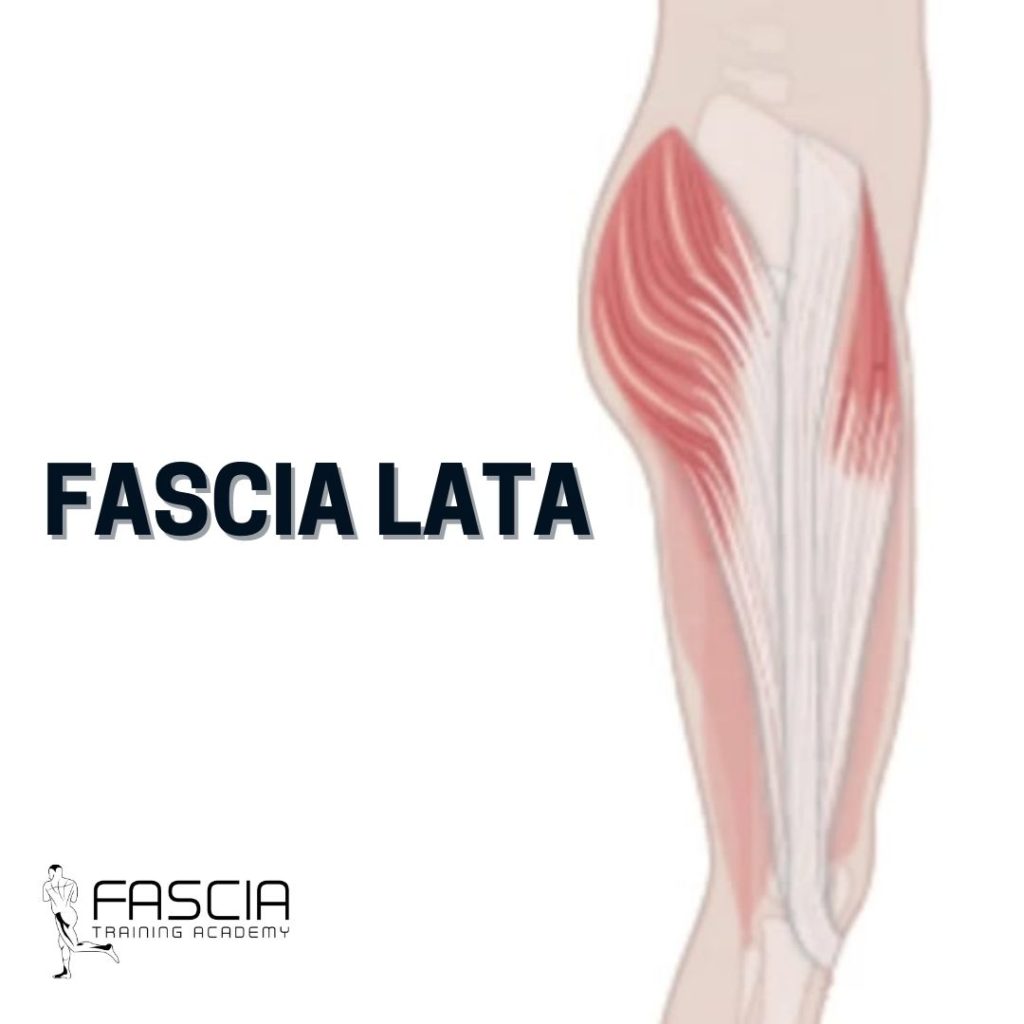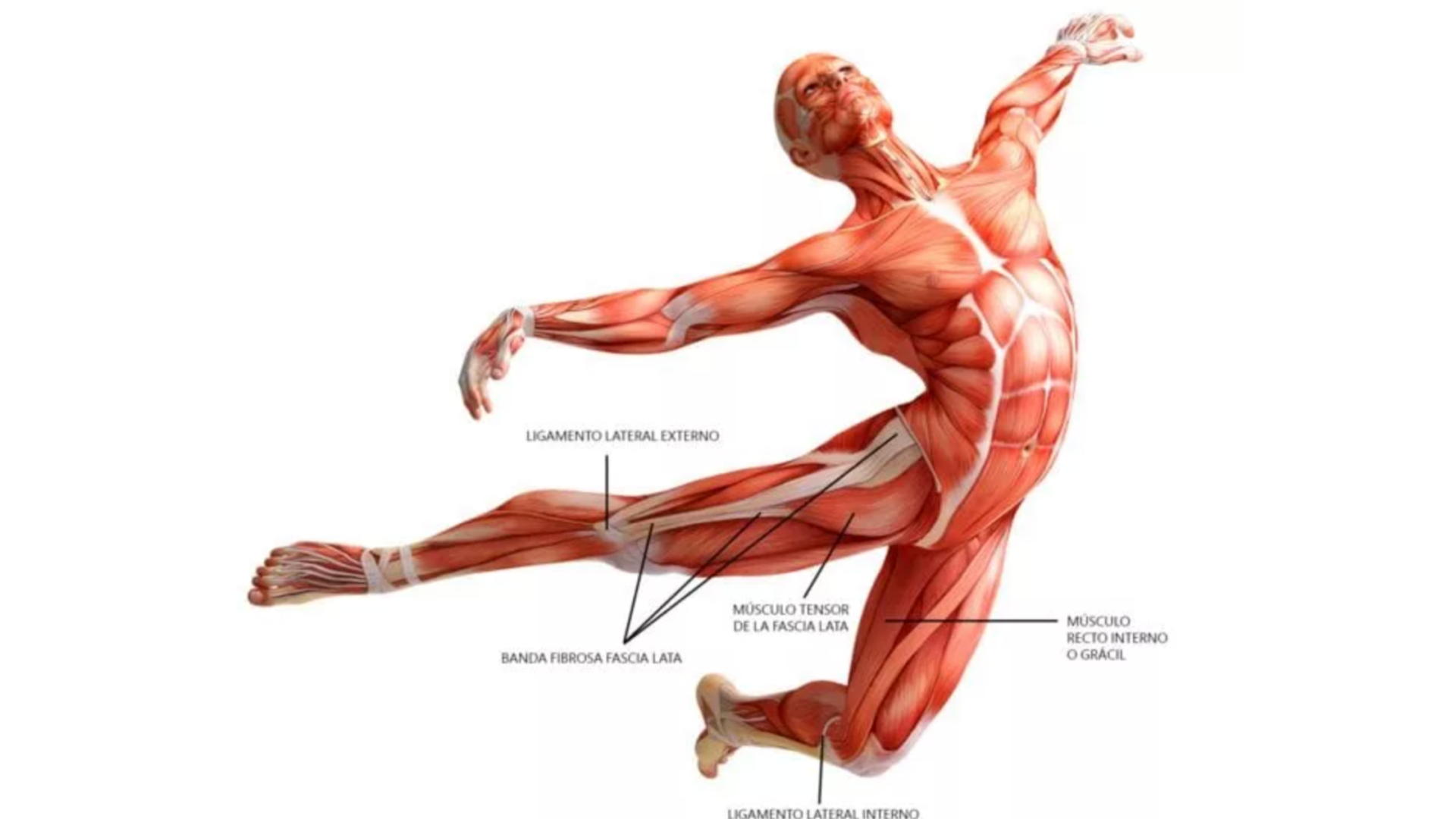(Excerpt from “Fascial Fitness: Fascia oriented training for bodywork and movement thereapies” by Divo G. Muller & Robert Schleip)
The fascia interprets our entire body and interlinks as myofascial chains. Understanding this interconnected tension is critical to training your body effectively and promoting longevity. We will introduce the most important fascia lines below.
1. Shoulder-Elbow Chain
This chain runs from the outside of the forearm to the elbow and on to the outside of the upper arm with the important lateral septum that connects to the deltoid muscle fascia, which extends from the upper par of the trapezius muscle to the neck. It also extends from the middle and lower part of the trapezius muscle to the spin.
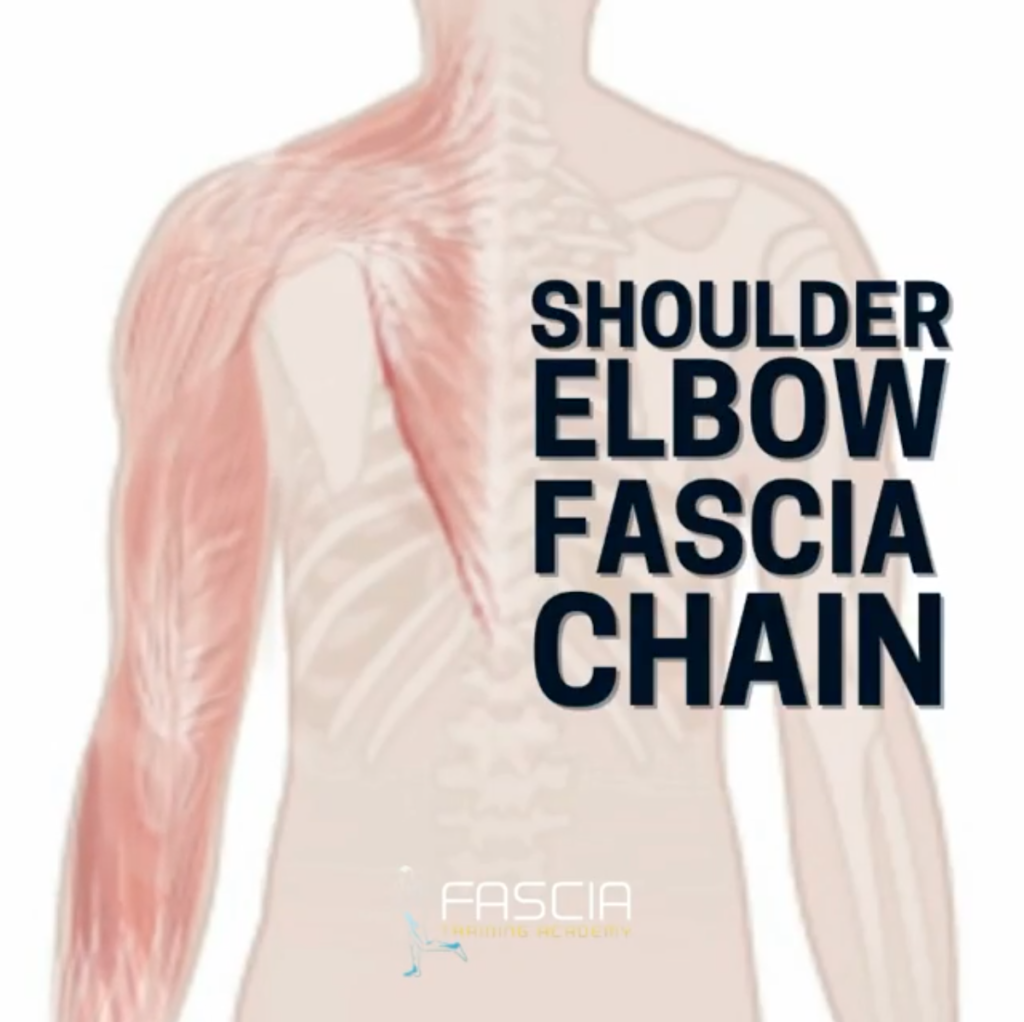
2. Chest-Biceps Chain
This line runs from the inside of the forearm, via the elbow, to the flexor side of the upper arm, including the biceps. It then connects to the large pectoral muscle all the way to the sternum.
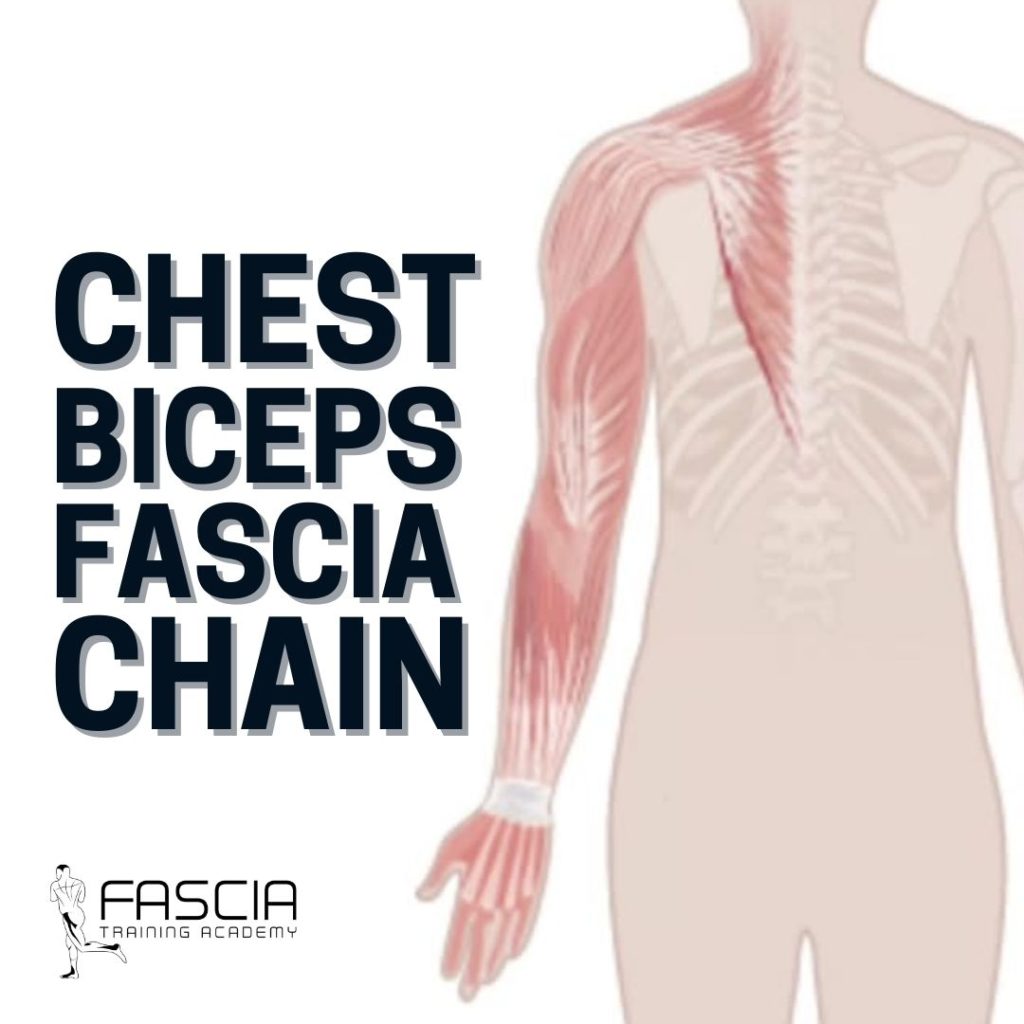
3. The Abdominal Network
The abdominal network is multi-layer and runs in multiple directions: straight, oblique, and transverse. This meshwork extends to the transverse abdominal muscle, which connects to the pelvic floor.
The straight abdominal muscle forms the uppermost, vertical layer, running from the pubis to the sternum. The second, deeper layer runs diagonally and is formed by the external oblique muscle, which runs along the side of the ribcage from the top outside to the bottom. From there it weaves its meshes further into the internal oblique muscle, which runs downward and to the outside. Beneath that is the transverse abdominal muscle that, together with the pelvic floor, forms the innermost layer. This deep transverse later also forms an internal fascial corset that extends all the way around the deepest layer of the thoracolumbar fascia and thereby also stabilizes the lumbar vertebra.
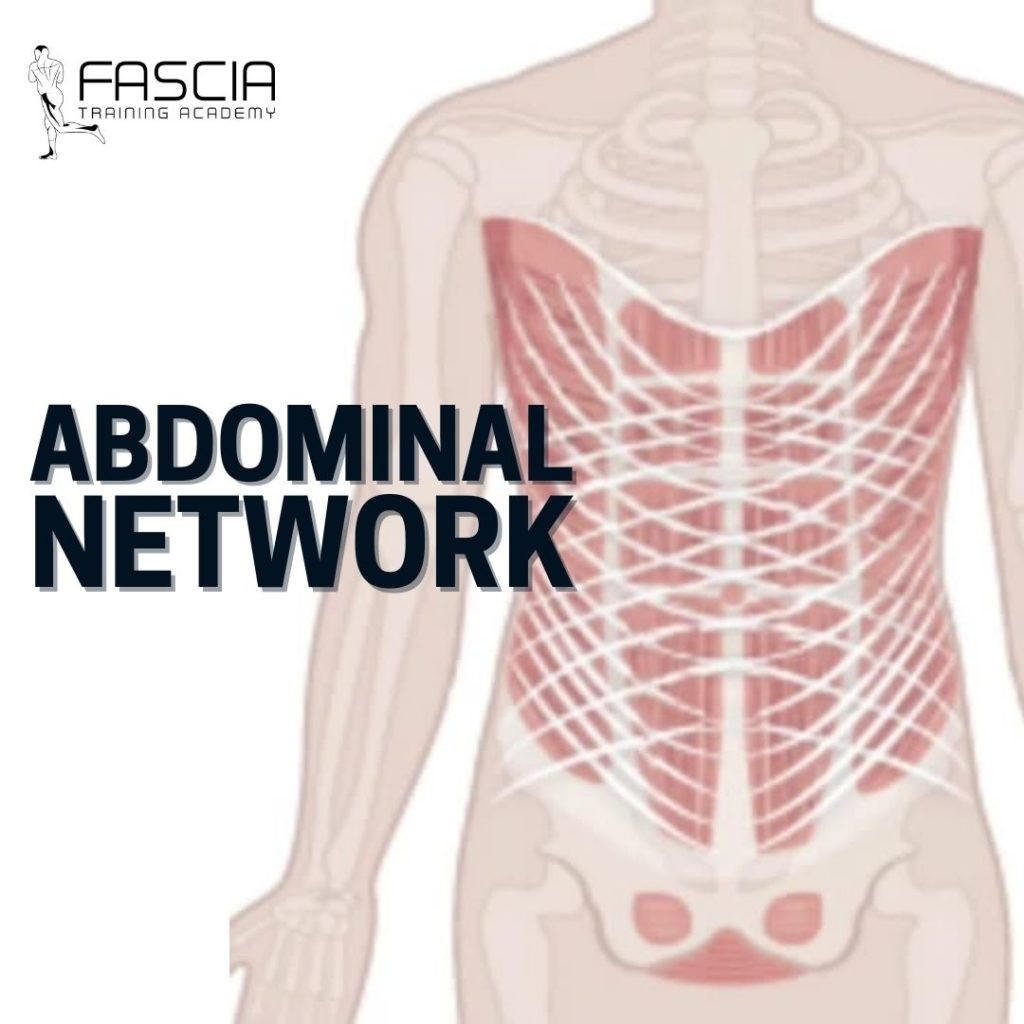
4. Diagonal Lat-Glutes Muscle Chain
This ample diagonal line spans from the large gluteal muscle to the large back muscle and is covered by the thoracolumbar fascia’s superficial layer. It connects the upper body to the lower body and this chain’s elasticity influences the swinging of arms and legs as we walk, among other things. Because the thoracolumbar fascia forms a dense connective tissue membrane, we can assume that this means a healthy back is capable of taking heavy loads and high impacts. Plus, strong tissues and well-tones fascia sheaths around the glutes are the best guarantee for a tight butt.
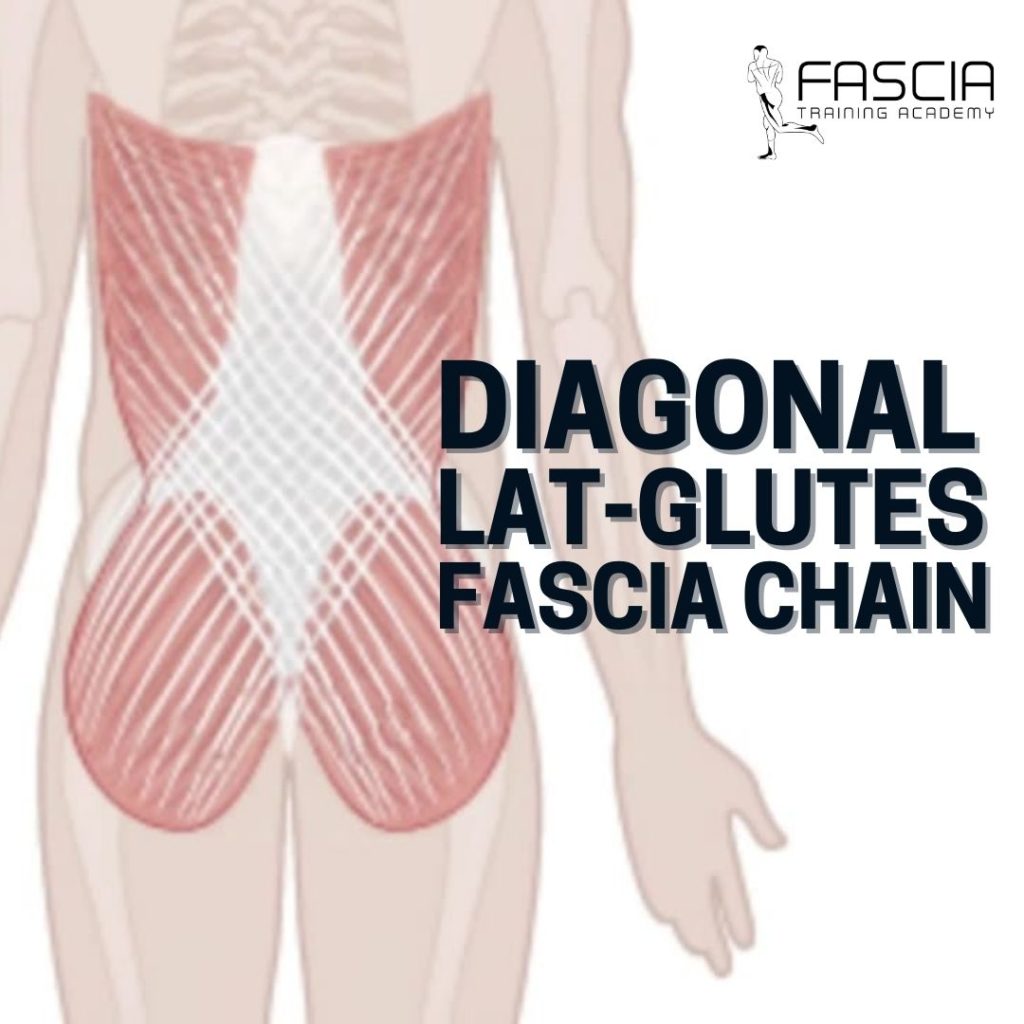
5. Plantar Fascia-Heel Pad-Achilles Tendon Chain
This chain is formed by the fibrous covering along the bottom of the foot. It extends from the fleshy part of the toes to the heel and is called the plantar fascia. The plantar fascia compacts toward the heel pad that covers the heel bone. The pad can shift easily and connects to the posterior part of the Achilles tendon, which has a longer extension, the Achilles aponeurosis, that reaches the knee.

6. Foot Arch-Adductors-Pelvic Floor Chain
This chain extends from the inside of the foot between heel and inner malleolus to the inside of the lower leg. It runs deep inside the lower leg between the tibia and fibula in front of the calf muscles and from there to the inside of the knee. This fascia strengthens the knee joint capsule as well as the knee ligaments. This chain continues on to the adductor group, a compact muscle group at the inside of the thigh. The adductors insert into the pelvis and connect into the anterior portion of the pelvic floor.
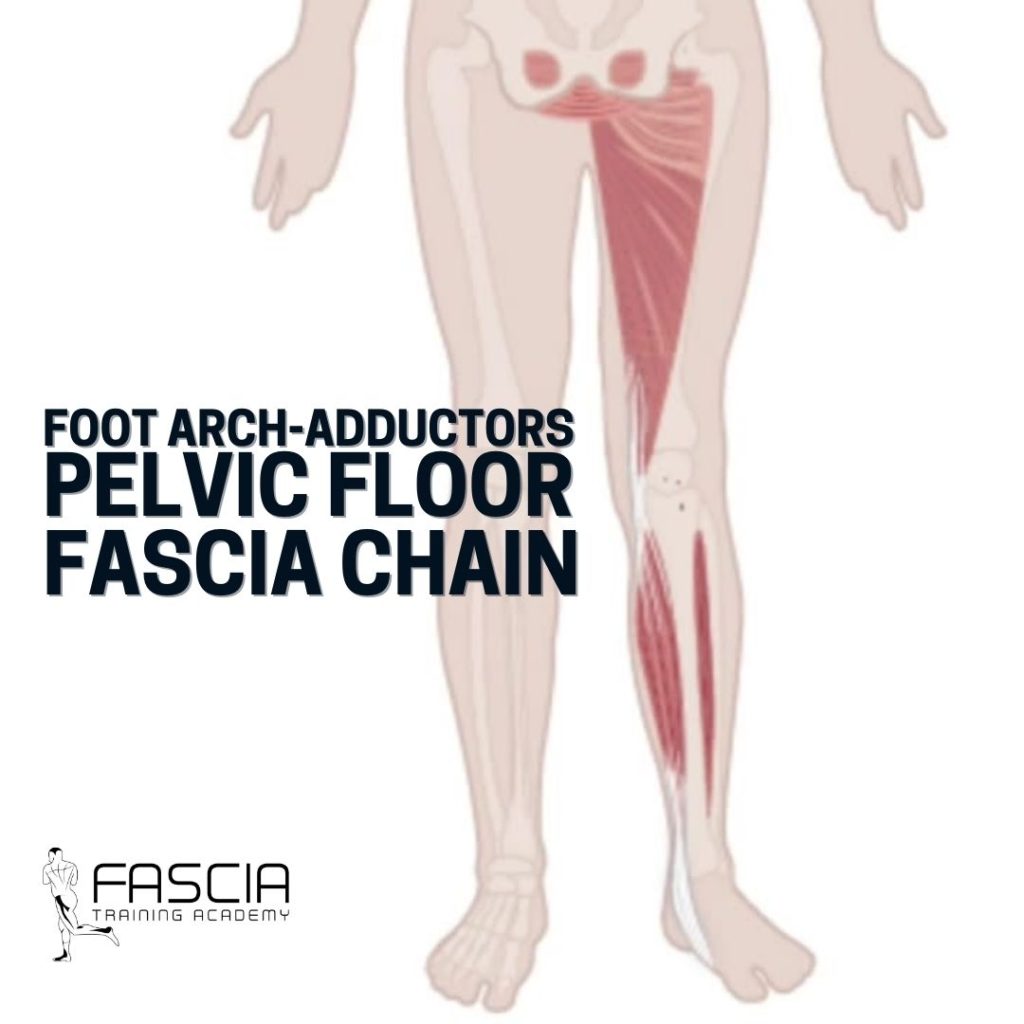
7. Fascia Lata: The Fascia of the Thigh
This large fascia begins at the iliac crest and from there, runs along the outside of the thigh to just below the knee. The large gluteal muscle and the tensor fascia latae – a small but strong muscle that originates at the anterior pelvic brim – work together as membrane tighteners. In training, we award this magical seventh fascia special status for tightening connective tissue because the thigh fascia and its special shape at the outside of the thigh, the iliotibial tract, are responsible for a toned contour. This fascia therefore plays a central role when it comes to cellulite.
